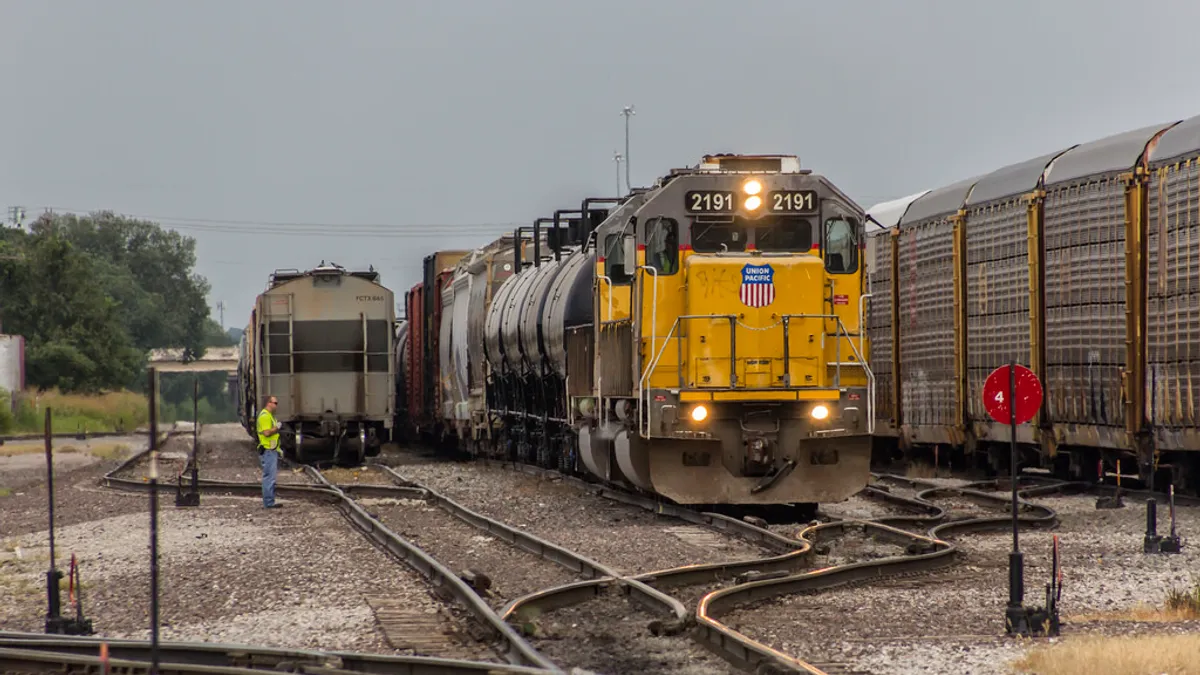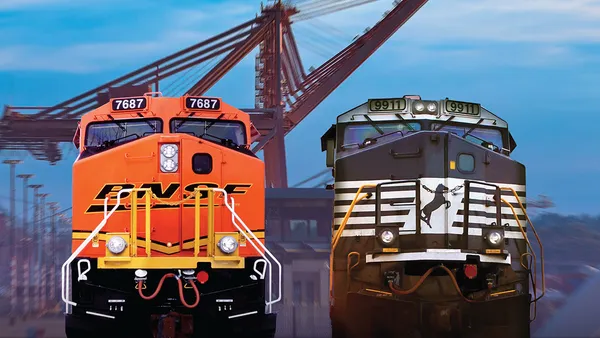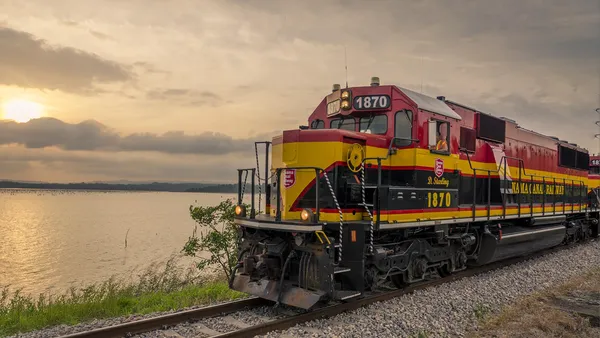Dive Brief:
- Union Pacific is not yet at the 50-yard line when it comes to improving the efficiency and profitability of the railroad, COO Jim Vena said on an earnings call Thursday. Further headcount reduction and network shifts are to come, executives said.
- The railroad posted record efficiency stats with an operating ratio of 59.7% for the fourth quarter (60.6% for the full year). The railroad also reported a 20% drop in crew starts (the number of crews that start a train journey) on the back of an 11% dip in carloads. Trip plan compliance gained nine percentage points year-over-year.
- Part of this newfound efficiency comes from closing or curtailing operations at several yards. Union Pacific is no longer humping cars at its Davidson Yard in Fort Worth, Texas, and reduced switches at its Settegast Yard in Houston. Executives did not mention any further lane rationalizations on the call.
Dive Insight:
With so much efficiency reclaimed — enough to save revenue progress despite a double-digit volume loss in the fourth quarter — what's left for Union Pacific to do in its quest for ultimate efficiency?
Hump yards, train lengths and people, are still in the crosshairs as the railroad chases its long-term goal of a 55% operating ratio, executives said. Total workforce at Union Pacific will decrease by roughly 8% in 2020. More freight could also help reach this goal, and so far in 2020, rail executives are displaying differing expectations on that front.
Fritz remained optimistic volumes would return to some extent during peak season all throughout 2019. And though he ended up being wrong about that, the railroad is predicting a slight, but still positive increase in volumes for 2020. Union Pacific's CFO Jennifer Hamann said it was expecting a "1% or so" volume increase.
CSX's prediction for 2020 volumes was flat to 2% down overall on its call last week.
Regarding the loose trucking market that railroads blame for keeping hold of intermodal volume, Fritz said, "we do feel like we are at the floor, " and December trucking figures suggest he may be right.
A return of agricultural freight volume could be also boon for Union Pacific and other railroads, but executives are still displaying cautious optimism. The phase 1 trade deal with China could be a good sign as long as the promises within it come to fruition.
"If it comes true, or if even a large portion or even a half of it comes true," Fritz said of the deal, "it’s a really nice tailwind for us going into the next couple of three years ... It just basically turns a headwind into a tailwind."














